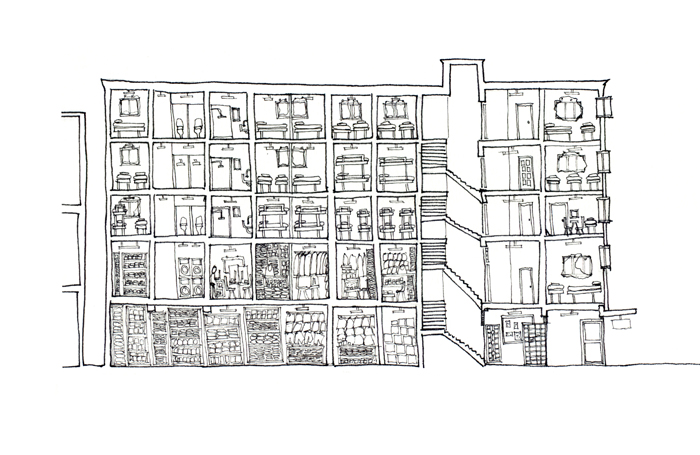Opaque Architectures: Urban Sites of Refuge in Cape Town (1990 - present)
Dr. Huda Tayob, The Bartlett School of Architecture, University College London
Awards RIBA President's Awards for Research 2018
Category Cities & Community

This study focuses on the urban spatial practices of refugee markets in Cape Town, South Africa, from 1990-present. It argues that mixed-use refugee markets are central sites for informal trade, accommodation and vital services: despite appearing highly localized, they are characterized by inventive spatial practices and host to trans-national refugee-led networks of care.
Yet, as the spaces of a marginalized population, they are largely overlooked in spatial discourses and therefore rendered opaque. Their opacity is further exacerbated by their contested siting, where in South Africa, this includes high levels of urban violence, a racialized landscape and an unwelcoming city context.
This paper focuses on the spatial practices of two refugee markets in Cape Town, Som City and Bellstat Junction, along with their connections to other sites on the continent and globe, including Nairobi, Dubai and Minneapolis. It shows how the architectural mechanism of the generic office block is adapted to negotiate home-making, publicness and diasporic identity.
The theoretical framework of subaltern studies literature enables an analysis of these spaces beyond a topographical reading as sites of deprivation, and instead points to the complexity of the spatial and material processes which underpin them. Taking up Gayatri Spivak’s text, “Can the subaltern speak?” this project develops a considered and ethical practice of studying contested sites more generally.
This is done by combining ethnographic and architectural hand-drawing research techniques to reflectively question the research, its approach and impact. This is complemented by newspaper and city-legal archival research.
Overall, the research questions the centrality of the refugee camp in studies of refuge, and offers a critical and conceptual reading of architectural informality. At the core, is the imperative that in order to build more equal, sustainable and hospitable cities, is the need to recognize and understand informal networks of refugee and informal transnational support.






